Posts for: dhelix33
Nov 21, 2011 19:02:35 #
To err is human... I made several errors in the introduction text I wrote. Was writing while at work - so I had to write fast - and didn't spell check. For instance the introduction should have been written this way,
"For me to simply say an image is 'boring' does not add value to your development as a photographer. For me to say; I like the image composition, however I believe if there was more tonemapping added in post processing, the image would have provided more definitive contrast in grey scale; might be something you can build upon. (By the way - these images you posted are not the identical)."
"For me to simply say an image is 'boring' does not add value to your development as a photographer. For me to say; I like the image composition, however I believe if there was more tonemapping added in post processing, the image would have provided more definitive contrast in grey scale; might be something you can build upon. (By the way - these images you posted are not the identical)."
jolly1 wrote:
quote=jolly1 quote=dhelix33 For me to simply say... (show quote)
Nov 21, 2011 18:49:23 #
I own a Nikon D3100 and D5100, and I was looking to add a full frame Nikon to my camera bag this is the process I went through
I considered the Nikon D3X (24 megapixels in a full frame sounded exquisite however there was a bit of sticker shock at the Nikon suggested price of $8.000. I next looked a Nikon D3S a bit more palatable at the MSRP of $5,200. Liked the D700 MSRP of $2,700 (which is basically a D3S without a battery grip built in). So, I was going to wait for Nikon to purchase the pending release of an upgrade for the D700 (heard it would be a D800). But the natural and environmental disasters in Japan this past year have put a halt on production and release of this upgrade So I went ahead and purchased a D700.
My Nikon D700 shares a similar body and size to the Nikon D300 - although I believe the D700 is just a bit larger. With weather sealing around the body, the build of this camera is solid, and feels hefty in my hands. The lighter weight and smaller size of this camera compared to the D3 means there are less physical features on the D700 as opposed to the D3. There is a single CF card slot instead of the two on the D3 - there is also no integrated battery grip on the D700 as found on the bottom of the D3. I actually think was a good a good idea - I purchased a MB-D10 battery grip after market.
The D700 has a different viewfinder prism that makes the viewfinder bigger but drops frame coverage to 95% compared to 100% on the D3 and D300. There is also a built-in eyepiece shutter found on the D3 in the D700. I have read specifications that my D700 shares the same estimate shutter life span of the D300 at 150,000 actuations in contrast to D3's 300,000 (I hope that doesn't mean after taking 150,000 images the device just stops :-)
Because I had been shooting with lenses designed for DX format cameras prior to this purchase of this FX format camera, I knew I was looking at a significant investment of new glass. I purchased a Sigma 24-70mm f/2.8G with the D700 body (and have since purchased a Nikkor 50mm f/1.8 prime, Sigma 12-24mm f/4.5-5.6, Nikkor 14-24mm f/2.8, Nikkor 28-300mm f/3.5-5.6 VRII, and Sigma 70-300mm f/4.0-5.6 OS all new). The FX lens combination is much heavier than any NIKON DX I have owned, although I found the camera to be well balanced and very comfortable in my hands even after my first couple hours shooting. My D700 has the same 12.1 megapixel CMOS full frame sensor as the D3S. I have not owned a D3S, but from experience I now know the D700 duplicates producing high IQ and low noise images that the D3 has been known for. The D700 also shares a 51 point auto-focus system with 3D tracking, which provides locking focus to moving subjects.
The D700 features a pop-up flash. Some may find it silly that a pop-up flash is built into a camera at this level. However, it serves me well not only for an occasional fill-in, but I have also used it as a commander on an assignment with my SB-600 Speedlight, and am very please with the capability and results. After owing a D40 and D5000 in the past - and currently owning a D3100 and D5100 I found the LCD screen on the D700 to be fabulous. The high resolution in this on screen assists how well focused I am at any given point during a shoot.
I am now used to the much quicker frames per second burst rate on this camera, compared to the slower fps burst rate on my DX models I had previous experience with. I have my camera set on 5 fps when capturing images for HDR post-processing. The D700 can be boosted to 8 frames per second with the addition of the MB-D10 battery grip. What is missing on the D3s but is on the D700 is an Image Sensor Cleaning function which shakes dust off its sensor using high frequency vibrations (and also offers a dust-off reference photo). Some minimize the effectiveness of sensor cleaning, but I say its feature to have rather than not to have.
Cheers!
Dhelix33
See some samples of my D700 images here...
http://www.flickr.com/photos/73877479@N00/sets/72157627582945437/show/
I considered the Nikon D3X (24 megapixels in a full frame sounded exquisite however there was a bit of sticker shock at the Nikon suggested price of $8.000. I next looked a Nikon D3S a bit more palatable at the MSRP of $5,200. Liked the D700 MSRP of $2,700 (which is basically a D3S without a battery grip built in). So, I was going to wait for Nikon to purchase the pending release of an upgrade for the D700 (heard it would be a D800). But the natural and environmental disasters in Japan this past year have put a halt on production and release of this upgrade So I went ahead and purchased a D700.
My Nikon D700 shares a similar body and size to the Nikon D300 - although I believe the D700 is just a bit larger. With weather sealing around the body, the build of this camera is solid, and feels hefty in my hands. The lighter weight and smaller size of this camera compared to the D3 means there are less physical features on the D700 as opposed to the D3. There is a single CF card slot instead of the two on the D3 - there is also no integrated battery grip on the D700 as found on the bottom of the D3. I actually think was a good a good idea - I purchased a MB-D10 battery grip after market.
The D700 has a different viewfinder prism that makes the viewfinder bigger but drops frame coverage to 95% compared to 100% on the D3 and D300. There is also a built-in eyepiece shutter found on the D3 in the D700. I have read specifications that my D700 shares the same estimate shutter life span of the D300 at 150,000 actuations in contrast to D3's 300,000 (I hope that doesn't mean after taking 150,000 images the device just stops :-)
Because I had been shooting with lenses designed for DX format cameras prior to this purchase of this FX format camera, I knew I was looking at a significant investment of new glass. I purchased a Sigma 24-70mm f/2.8G with the D700 body (and have since purchased a Nikkor 50mm f/1.8 prime, Sigma 12-24mm f/4.5-5.6, Nikkor 14-24mm f/2.8, Nikkor 28-300mm f/3.5-5.6 VRII, and Sigma 70-300mm f/4.0-5.6 OS all new). The FX lens combination is much heavier than any NIKON DX I have owned, although I found the camera to be well balanced and very comfortable in my hands even after my first couple hours shooting. My D700 has the same 12.1 megapixel CMOS full frame sensor as the D3S. I have not owned a D3S, but from experience I now know the D700 duplicates producing high IQ and low noise images that the D3 has been known for. The D700 also shares a 51 point auto-focus system with 3D tracking, which provides locking focus to moving subjects.
The D700 features a pop-up flash. Some may find it silly that a pop-up flash is built into a camera at this level. However, it serves me well not only for an occasional fill-in, but I have also used it as a commander on an assignment with my SB-600 Speedlight, and am very please with the capability and results. After owing a D40 and D5000 in the past - and currently owning a D3100 and D5100 I found the LCD screen on the D700 to be fabulous. The high resolution in this on screen assists how well focused I am at any given point during a shoot.
I am now used to the much quicker frames per second burst rate on this camera, compared to the slower fps burst rate on my DX models I had previous experience with. I have my camera set on 5 fps when capturing images for HDR post-processing. The D700 can be boosted to 8 frames per second with the addition of the MB-D10 battery grip. What is missing on the D3s but is on the D700 is an Image Sensor Cleaning function which shakes dust off its sensor using high frequency vibrations (and also offers a dust-off reference photo). Some minimize the effectiveness of sensor cleaning, but I say its feature to have rather than not to have.
Cheers!
Dhelix33
See some samples of my D700 images here...
http://www.flickr.com/photos/73877479@N00/sets/72157627582945437/show/
Stumptowner wrote:
I am curious if there are any UHH forum participants who are using FF cameras. If so, which model(s) and what led to that choice?
Thanks.
Thanks.
Nov 21, 2011 17:45:29 #
Robert Graybeal wrote:
dhelix33, I like your work, I think I like the first one the best.
What is you work flow or process for converting to B&W?
Or is it a secret?
What is you work flow or process for converting to B&W?
Or is it a secret?
That was a good choice - one that involved some detailed work. It is a merged multiple exposure HDR that I converted to black and white. No 'secret' here - I post-processes images with Paintshop Photo Pro X4 and/or Photomatix 4. Here are the specs on that first image...
Five 14-bit RAW image merge
Photomatix 4; Paintshop Photo Pro X3 Tone Mapping
Photomatix 4 Black & White conversion
Image Size:L (4256 x 2832), FX
Image Quality: Compressed RAW (14-bit)
Device: Nikon D700
Lens: Sigma 24-70mm F/2.8G
Focal Length: 24mm
Exposure Mode: Manual
Aperture: F/11
Focus Mode: AF-S
AF-Area Mode: Dynamic, 51 points
ISO Sensitivity: 100
Vignette Control: High
Exposure 1
Shutter Speed:1/60s
Exposure Comp.:+0.3EV
Exposure 2
Shutter Speed:1/125s
Exposure Comp.:-0.7EV
Exposure 3
Shutter Speed:1/250s
Exposure Comp.:-1.7EV
Exposure 4
Shutter Speed:1/500s
Exposure Comp.:-2.7EV
Exposure 5
Shutter Speed:1/1000s
Exposure Comp.:-3.7EV
Nov 21, 2011 16:56:33 #
greymule -
Compared to my D3100 and D5100 APS-c sensors, my FX CMOS sensor provides more physical real-estate.The FX sensor provides a larger pixel pitch, thus improving on SNR (Signal-To-Noise Ratio) at each photosite on the sensor and subsequently improving both dynamic range and noise performance (given the same level of digital processing technology).
That being said, simply moving to an FX camera doesn't necessarily mean you will inherently receive better IQ (Image Quality). A Nikon DX sensor combined with high enough resolution; along with recent advances in high-ISO performance (similar to the applied technology found in my D5100 DX sensor), can offer some advantages for nature photographers. For instance, I have found when mounting a FX-compatible lenses on a DX body, it uses a higher quality area of the image circle in the DX sensor.
By the way - I too was waiting for the upgrade for the D700 to purchase however I tired of the delay in production (of what I have heard will be the D800) due to natural and environmental disasters in Japan this past year. I would not pay heed to the rumor sites online about the upgrade Nikon holds such information quite close to the vest. When it is released, we will know.
I am quite satisfied with the D700's performance the short time I have used it, not much more that I can ask for in a professional grade camera.
Forgive me for writing so much I am an engineer by vocation and I actually enjoy learning about, understanding, and sharing information about the design and functionality of things
Cheers!
dhelix33
Compared to my D3100 and D5100 APS-c sensors, my FX CMOS sensor provides more physical real-estate.The FX sensor provides a larger pixel pitch, thus improving on SNR (Signal-To-Noise Ratio) at each photosite on the sensor and subsequently improving both dynamic range and noise performance (given the same level of digital processing technology).
That being said, simply moving to an FX camera doesn't necessarily mean you will inherently receive better IQ (Image Quality). A Nikon DX sensor combined with high enough resolution; along with recent advances in high-ISO performance (similar to the applied technology found in my D5100 DX sensor), can offer some advantages for nature photographers. For instance, I have found when mounting a FX-compatible lenses on a DX body, it uses a higher quality area of the image circle in the DX sensor.
By the way - I too was waiting for the upgrade for the D700 to purchase however I tired of the delay in production (of what I have heard will be the D800) due to natural and environmental disasters in Japan this past year. I would not pay heed to the rumor sites online about the upgrade Nikon holds such information quite close to the vest. When it is released, we will know.
I am quite satisfied with the D700's performance the short time I have used it, not much more that I can ask for in a professional grade camera.
Forgive me for writing so much I am an engineer by vocation and I actually enjoy learning about, understanding, and sharing information about the design and functionality of things
Cheers!
dhelix33
greymule wrote:
Thanks so much. The D700 images are especially nic... (show quote)
Nov 21, 2011 16:17:08 #
Nov 21, 2011 16:16:10 #
I use Paintshop Photo Pro X4 and Photomatix 4 for post-processing. Have been using Nikon DX camera bodies and glass since moving into DSLR imaging years ago. When I purchased my Nikon D700 a coupl;e months ago I had to buy new glass for the full frame CMOS sensor in the FX (all the glass I owned was designed for the smaller APS-c sensor format). I have purchased these lenses over the past couple months (ordered the 24-70mm with the camera body - and it is my workhorse):
Nikkor 50mm f/1.8 prime
Sigma 12-24mm f/4.5-5.6
Nikkor 14-24mm f/2.8
Sigma 24-70mm f/2.8
Nikkor 28-300mm f/3.5-5.6 VRII
Cheers!
dhelix33
Nikkor 50mm f/1.8 prime
Sigma 12-24mm f/4.5-5.6
Nikkor 14-24mm f/2.8
Sigma 24-70mm f/2.8
Nikkor 28-300mm f/3.5-5.6 VRII
Cheers!
dhelix33
Nov 21, 2011 16:14:48 #
I have been using Nikon DX camera bodies and glass since moving into DSLR imaging years ago. When I purchased my Nikon D700 a coupl;e months ago I had to buy new glass for the full frame CMOS sensor in the FX (all the glass I owned was designed for the smaller APS-c sensor format). I have purchased these lenses over the past couple months (ordered the 24-70mm with the camera body):
Nikkor 50mm f/1.8 prime
Sigma 12-24mm f/4.5-5.6
Nikkor 14-24mm f/2.8
Sigma 24-70mm f/2.8
Nikkor 28-300mm f/3.5-5.6 VRII
Cheers!
dhelix33
Nikkor 50mm f/1.8 prime
Sigma 12-24mm f/4.5-5.6
Nikkor 14-24mm f/2.8
Sigma 24-70mm f/2.8
Nikkor 28-300mm f/3.5-5.6 VRII
Cheers!
dhelix33
Nov 21, 2011 16:06:43 #
Nov 21, 2011 15:47:21 #
For me to simply say an image is 'boring' does not add value to your development as a photographer. For me to say; I like the image composition, however I believe if there was more tonemapping added in post processing, the image would have a provided more definitieve contract in grey scale; might be something you can build upon. (By the way - these images you posted are not the identical).
When I started out in photography with my Nikon F2 35mm film SLR (so many years ago), I shot 100% in black and white using a Nikkor 50mm prime (learned to zoom with my feet with that camera and lens those were the days!)
I also developed the black and white film I shot, so I learned to complete the film imaging circle when starting out using this medium.
I prefer a black and white image in some cases when shooting with DSLRs today. I think that black and white images are classic and elegant; they can even be romantic and special.
When I was learning photography, the simplicity of black and white fill shooting helped me to focus on important things, like composition and pre-visualization. Today, I have found it possible convert a seemingly drab digital color shot into a superlative black and white image.
Back in the day, black and white prints had a refined quality about them. The simplicity and uncluttered look gave the subject a polished, high-class feel. I believe that without the distraction of color, a picture leads each viewer to recognize the individuality and uniqueness of the subject(s) in an image.
One thing that has always given me the opportunity to see things fresh is to always enjoy the process of capturing an image, and having fun doing so. Keep on practicing, and honing your craft.
Pre-visualization is one of the most important factors, and you can set most late model DSLR cameras to a "Monochrome setting which will produce grey scale image when taking a shot. I capture all of my images in color. When composing an image, at times I will pre-visualize a color image in black and white prior to post-processing.
Most of all have fun on your journey of image creation.
Cheers!
dhelix33
Here are some samples of my black and white images:
When I started out in photography with my Nikon F2 35mm film SLR (so many years ago), I shot 100% in black and white using a Nikkor 50mm prime (learned to zoom with my feet with that camera and lens those were the days!)
I also developed the black and white film I shot, so I learned to complete the film imaging circle when starting out using this medium.
I prefer a black and white image in some cases when shooting with DSLRs today. I think that black and white images are classic and elegant; they can even be romantic and special.
When I was learning photography, the simplicity of black and white fill shooting helped me to focus on important things, like composition and pre-visualization. Today, I have found it possible convert a seemingly drab digital color shot into a superlative black and white image.
Back in the day, black and white prints had a refined quality about them. The simplicity and uncluttered look gave the subject a polished, high-class feel. I believe that without the distraction of color, a picture leads each viewer to recognize the individuality and uniqueness of the subject(s) in an image.
One thing that has always given me the opportunity to see things fresh is to always enjoy the process of capturing an image, and having fun doing so. Keep on practicing, and honing your craft.
Pre-visualization is one of the most important factors, and you can set most late model DSLR cameras to a "Monochrome setting which will produce grey scale image when taking a shot. I capture all of my images in color. When composing an image, at times I will pre-visualize a color image in black and white prior to post-processing.
Most of all have fun on your journey of image creation.
Cheers!
dhelix33
Here are some samples of my black and white images:
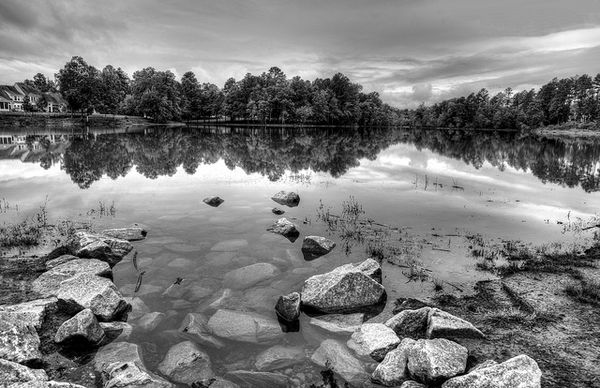

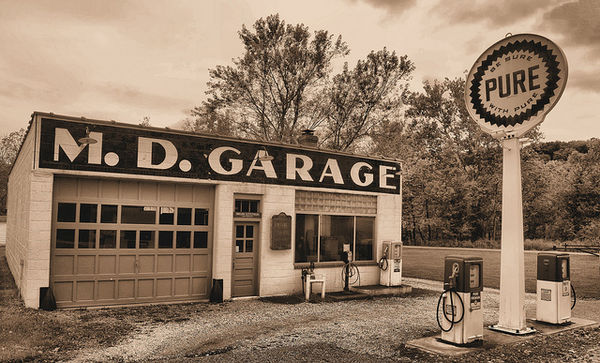
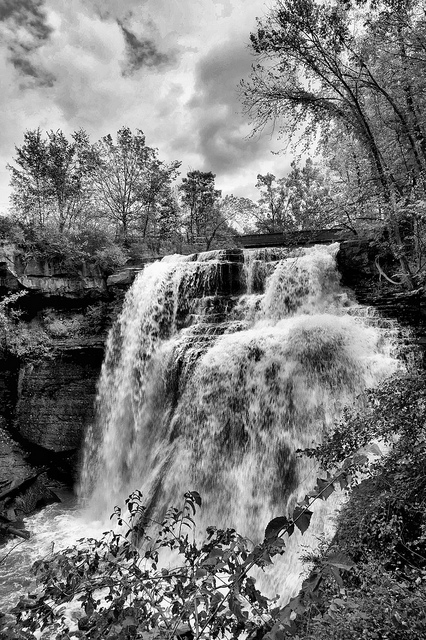
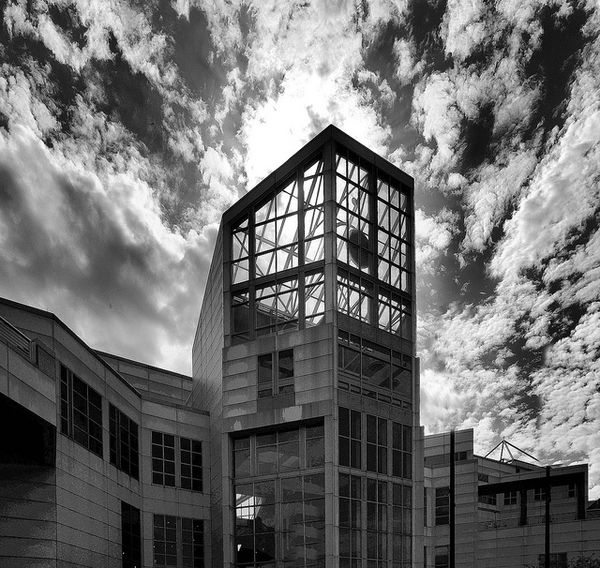

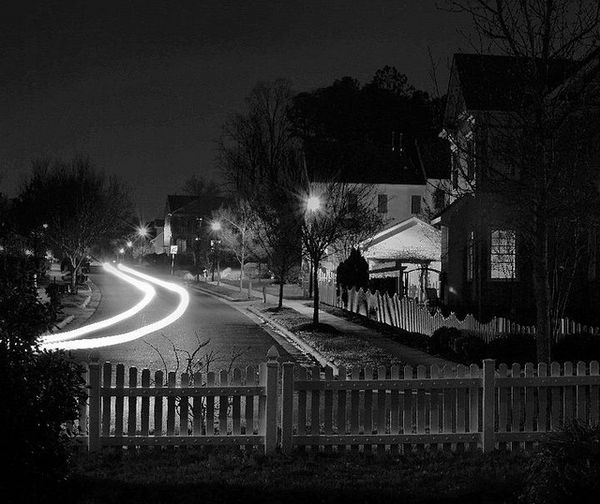
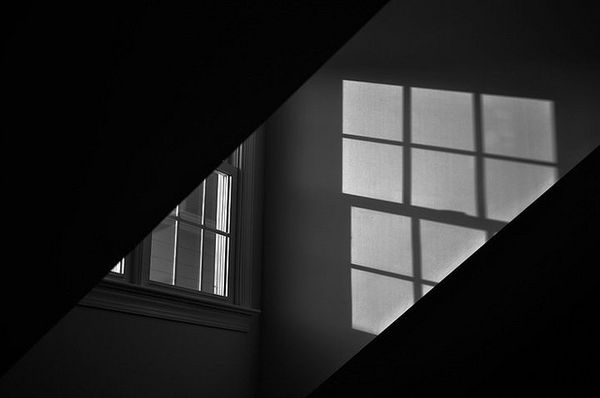
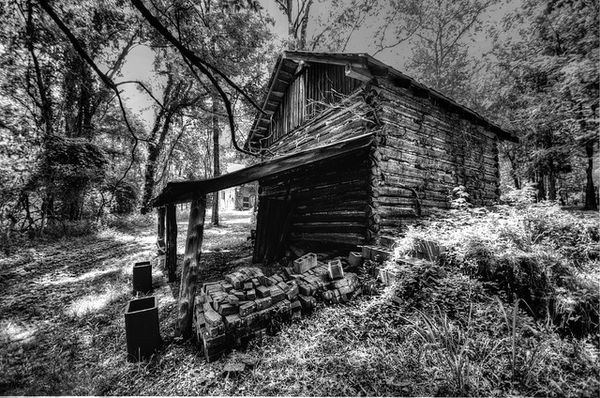

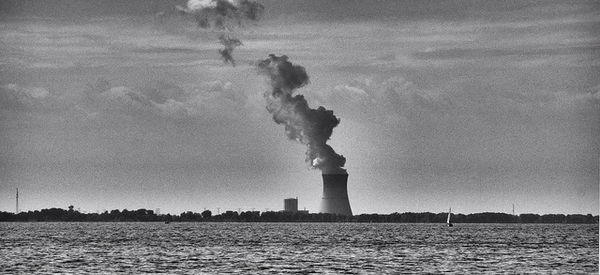

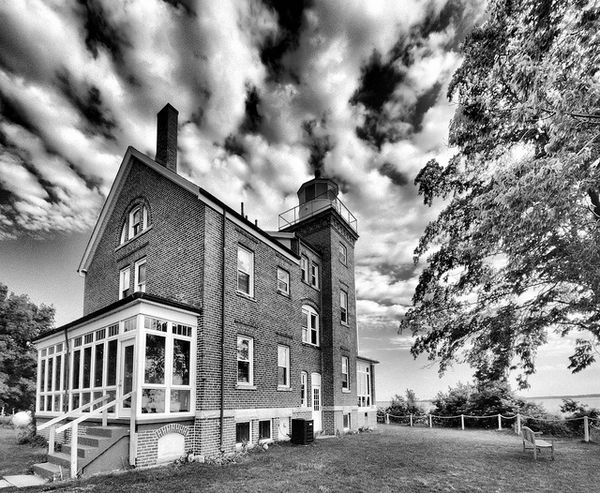


Nov 21, 2011 14:40:27 #
Hey there jerryc41 -
You are too funny...
I happent to also have a Nikon D5100 (which has the same ASP-c EXSPEED sensor that is installed in your D7000.
Cheers!
dhelix33
Here are some samples with that device:
http://www.flickr.com/photos/73877479@N00/sets/72157628005121715/show/
You are too funny...
I happent to also have a Nikon D5100 (which has the same ASP-c EXSPEED sensor that is installed in your D7000.
Cheers!
dhelix33
Here are some samples with that device:
http://www.flickr.com/photos/73877479@N00/sets/72157628005121715/show/
Nov 21, 2011 14:27:13 #
I changed over to digital imaging cameras from my old (but well used and trusty) Nikon F2 35mm film SLR camera years ago. Have been using Nikon DX format cameras since moving into DSLR imaging (currently shoot with a Nikon D5100 and D3100 DX format bodies).
However, I made the move into full frame digital imaging with the purchase of a Nikon D700 FX a couple months ago and have found the FX has taken me yet to another level of digital imaging.
Cheers!
dhelix33
Here are some samples from the D700:
However, I made the move into full frame digital imaging with the purchase of a Nikon D700 FX a couple months ago and have found the FX has taken me yet to another level of digital imaging.
Cheers!
dhelix33
Here are some samples from the D700:
1
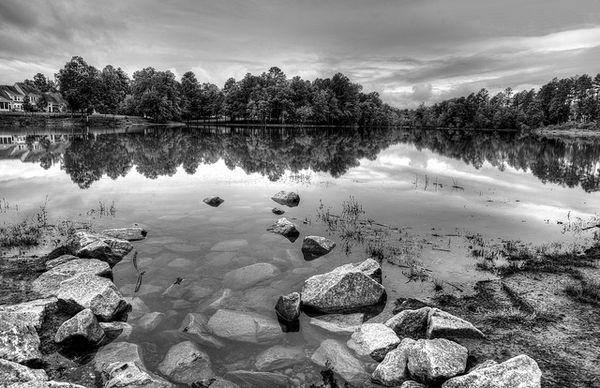
2
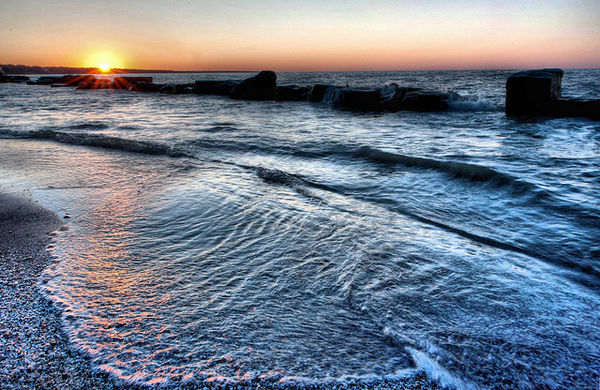
3
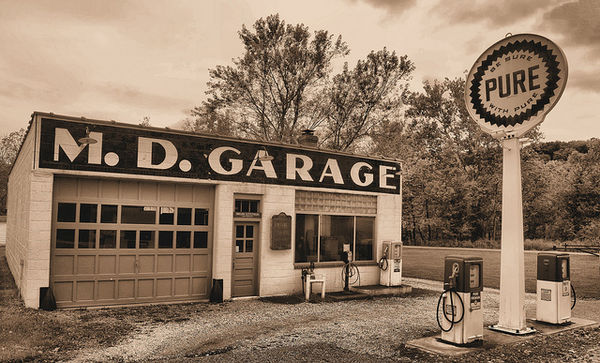
4
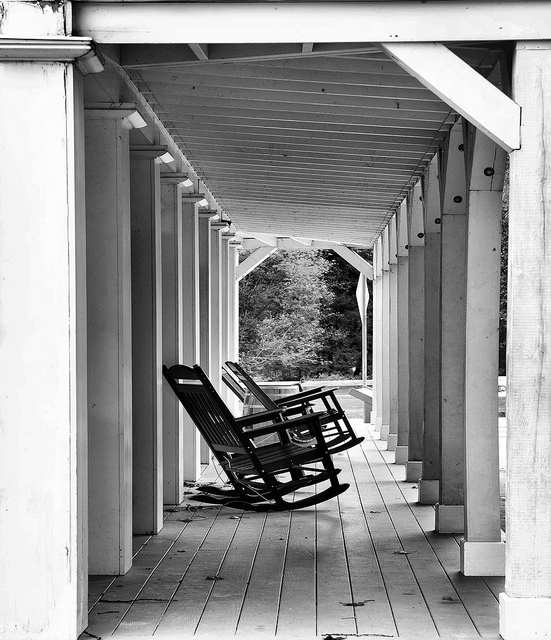
5
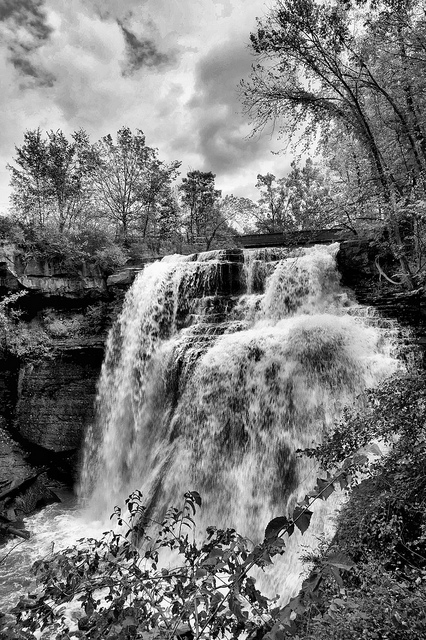
6
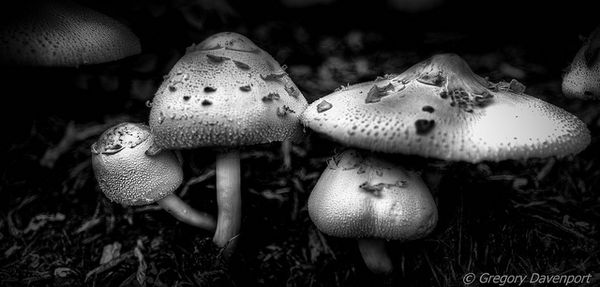
7
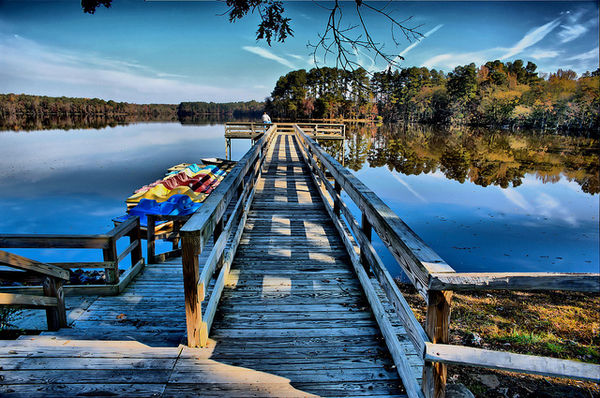
8
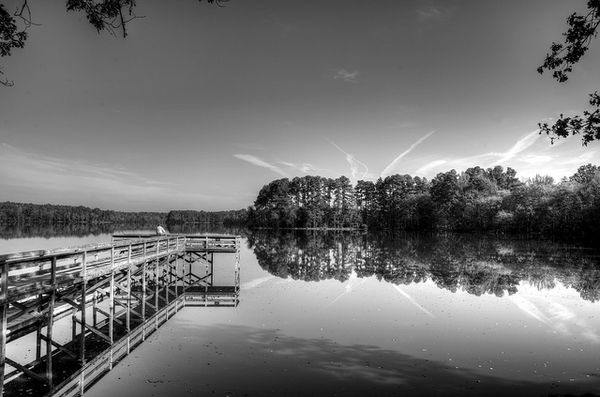
9
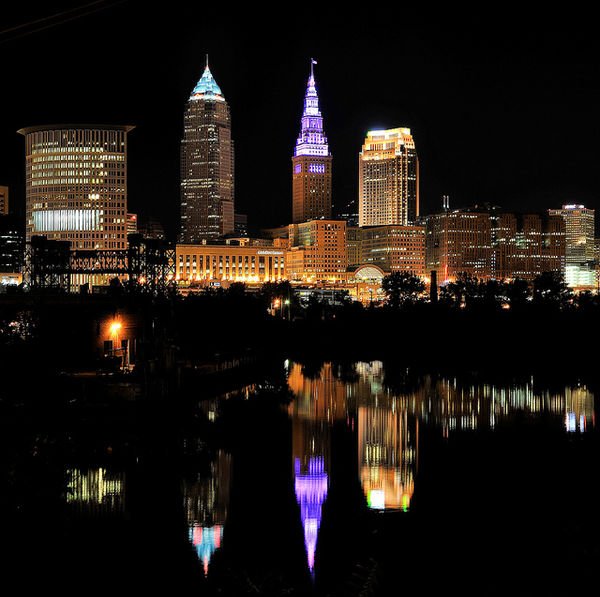
Nov 21, 2011 12:52:01 #
Today, most DSLR cameras have so much automation they promise to do it all for you - I will grant you that some automation does allow a photographer to concentrate on what they want to capture. I have overhead this said to new DSLR owners by salesmen at some camera shops, Just keep this dial here set to P or A - and fire away! The camera will do everything else.
You have learned, as many others have, that is not really the truth. Chances are that most people - if not all reading this post (including myself) - have a do-it-all-for-you camera. Anyone who has desired to capture an image just right knows an auto setting, most times, doesnt provide just right images. I am sure many new to photography - that purchase a camera which has more dials and readouts than the brain can assimilate - have found keeping a camera in an auto mode is not living up to that promise to do it all. It appears you have reached the point for a desire to consistently create correct exposures. I have discovered no other way to consistently capture correct exposures than shooting exposures manually.
A correct exposure is a simple combination of three important factors: aperture, shutter speed, and ISO. Since the beginning of photography, these same three factors have always been at the heart of every exposure, whether that exposure is correct or not
Aperture is the amount of light allowed to hit the sensor. A way to understand the f-stop setting on a lens is to think in inverse. The smaller the f-stop number, like f/2.8, the larger the aperture opening and more light is allowed in to the sensor. The larger the f-stop number, like f/16, the smaller the aperture opening and less light is allowed in to the sensor.
Shutter Speed is the amount of time the light is allowed to be on the sensor. A 1-second shutter speed (usually used in low light imaging, like at night or indoors) exposes the sensor to light for a longer period than a short 1/1000 of a second (usually in well-lit areas, like outdoors).
ISO is the level of sensitivity a sensor will have to the amount of and time duration that light is exposed to it. A low ISO (like 100) is less sensitive to light. A high ISO (like 1600) is more sensitive to light. A general rule is to use low ISO in daylight, and high ISO in darker illuminations (like indoors and at night).
I wish you the best in you image taking adventure.
Here is a sample of images I took with a D700 I purchased a couple months ago. All images were captured with manual exposure settings.
http://www.flickr.com/photos/73877479@N00/sets/72157627582945437/show/
You have learned, as many others have, that is not really the truth. Chances are that most people - if not all reading this post (including myself) - have a do-it-all-for-you camera. Anyone who has desired to capture an image just right knows an auto setting, most times, doesnt provide just right images. I am sure many new to photography - that purchase a camera which has more dials and readouts than the brain can assimilate - have found keeping a camera in an auto mode is not living up to that promise to do it all. It appears you have reached the point for a desire to consistently create correct exposures. I have discovered no other way to consistently capture correct exposures than shooting exposures manually.
A correct exposure is a simple combination of three important factors: aperture, shutter speed, and ISO. Since the beginning of photography, these same three factors have always been at the heart of every exposure, whether that exposure is correct or not
Aperture is the amount of light allowed to hit the sensor. A way to understand the f-stop setting on a lens is to think in inverse. The smaller the f-stop number, like f/2.8, the larger the aperture opening and more light is allowed in to the sensor. The larger the f-stop number, like f/16, the smaller the aperture opening and less light is allowed in to the sensor.
Shutter Speed is the amount of time the light is allowed to be on the sensor. A 1-second shutter speed (usually used in low light imaging, like at night or indoors) exposes the sensor to light for a longer period than a short 1/1000 of a second (usually in well-lit areas, like outdoors).
ISO is the level of sensitivity a sensor will have to the amount of and time duration that light is exposed to it. A low ISO (like 100) is less sensitive to light. A high ISO (like 1600) is more sensitive to light. A general rule is to use low ISO in daylight, and high ISO in darker illuminations (like indoors and at night).
I wish you the best in you image taking adventure.
Here is a sample of images I took with a D700 I purchased a couple months ago. All images were captured with manual exposure settings.
http://www.flickr.com/photos/73877479@N00/sets/72157627582945437/show/
Nov 21, 2011 12:48:35 #
auto setting, most times, doesnt provide just right images. I am sure many new to photography - that purchase a camera which has more dials and readouts than the brain can assimilate - have found keeping a camera in an auto mode is not living up to that promise to do it all. It appears you have reached the point for a desire to consistently create correct exposures. I have discovered no other way to consistently capture correct exposures than shooting exposures manually.
A correct exposure is a simple combination of three important factors: aperture, shutter speed, and ISO. Since the beginning of photography, these same three factors have always been at the heart of every exposure, whether that exposure is correct or not
Aperture is the amount of light allowed to hit the sensor. A way to understand the f-stop setting on a lens is to think in inverse. The smaller the f-stop number, like f/2.8, the larger the aperture opening and more light is allowed in to the sensor. The larger the f-stop number, like f/16, the smaller the aperture opening and less light is allowed in to the sensor.
Shutter Speed is the amount of time the light is allowed to be on the sensor. A 1-second shutter speed (usually used in low light imaging, like at night or indoors) exposes the sensor to light for a longer period than a short 1/1000 of a second (usually in well-lit areas, like outdoors).
ISO is the level of sensitivity a sensor will have to the amount of and time duration that light is exposed to it. A low ISO (like 100) is less sensitive to light. A high ISO (like 1600) is more sensitive to light. A general rule is to use low ISO in daylight, and high ISO in darker illuminations (like indoors and at night).
I wish you the best in you image taking adventure.
Here are samples of images I took with a D700 I purchased a couple months ago. All images were captured with manual exposure settings.
http://www.flickr.com/photos/73877479@N00/sets/72157627582945437/show/
A correct exposure is a simple combination of three important factors: aperture, shutter speed, and ISO. Since the beginning of photography, these same three factors have always been at the heart of every exposure, whether that exposure is correct or not
Aperture is the amount of light allowed to hit the sensor. A way to understand the f-stop setting on a lens is to think in inverse. The smaller the f-stop number, like f/2.8, the larger the aperture opening and more light is allowed in to the sensor. The larger the f-stop number, like f/16, the smaller the aperture opening and less light is allowed in to the sensor.
Shutter Speed is the amount of time the light is allowed to be on the sensor. A 1-second shutter speed (usually used in low light imaging, like at night or indoors) exposes the sensor to light for a longer period than a short 1/1000 of a second (usually in well-lit areas, like outdoors).
ISO is the level of sensitivity a sensor will have to the amount of and time duration that light is exposed to it. A low ISO (like 100) is less sensitive to light. A high ISO (like 1600) is more sensitive to light. A general rule is to use low ISO in daylight, and high ISO in darker illuminations (like indoors and at night).
I wish you the best in you image taking adventure.
Here are samples of images I took with a D700 I purchased a couple months ago. All images were captured with manual exposure settings.
http://www.flickr.com/photos/73877479@N00/sets/72157627582945437/show/
Nov 21, 2011 12:23:05 #
Hey there 'greymule' -
Some specs on the image:
Camera: Nikon D5000 DX (Since upgraded to a D5100)
Lens: Tamron 10-24mm
Single NEF (RAW) image - Tonemapped.
Taken on November 21, 2010 in Red Rock Canyon of the Mojave Desert, Nevada. I was at about 4,500 feet elevation / 37 degrees F / light hail had just begun behind me (Found it intriguing that this image was captured one year ago today - talk about coincidence!).
I also have a D3100 as a DX back-up. Entered full frame digital imaging capability with the purchase of a Nikon D700 FX (and new glass) a couple months ago.
Some of my D700 work:
http://www.flickr.com/photos/73877479@N00/sets/72157627582945437/show/
Some specs on the image:
Camera: Nikon D5000 DX (Since upgraded to a D5100)
Lens: Tamron 10-24mm
Single NEF (RAW) image - Tonemapped.
Taken on November 21, 2010 in Red Rock Canyon of the Mojave Desert, Nevada. I was at about 4,500 feet elevation / 37 degrees F / light hail had just begun behind me (Found it intriguing that this image was captured one year ago today - talk about coincidence!).
I also have a D3100 as a DX back-up. Entered full frame digital imaging capability with the purchase of a Nikon D700 FX (and new glass) a couple months ago.
Some of my D700 work:
http://www.flickr.com/photos/73877479@N00/sets/72157627582945437/show/
Nov 21, 2011 08:16:25 #
I own one - use it on my Nikon DX bodies - D3100 and D5100. Have a Nikkor 14-24mm f/2.8 and Sigma 12-24mm f/4.5-5.6 for my D700 FX.
Here are a couple sample images taken with the lens:
http://www.flickr.com/photos/73877479@N00/5548731247/lightbox/
http://www.flickr.com/photos/73877479@N00/5822240134/lightbox/
Cheers!
dhelix33
Here are a couple sample images taken with the lens:
http://www.flickr.com/photos/73877479@N00/5548731247/lightbox/
http://www.flickr.com/photos/73877479@N00/5822240134/lightbox/
Cheers!
dhelix33